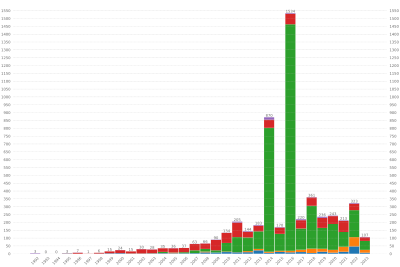
Any planet is an extremely faint light source compared to its parent star. For example, a star like the Sun is about a billion times as bright as the reflected light from any of the planets orbiting it. In addition to the intrinsic difficulty of detecting such a faint light source, the light from the parent star causes a glare that washes it out. For those reasons, very few of the exoplanets reported as of January 2024[update] have been observed directly, with even fewer being resolved from their host star.
Instead, astronomers have generally had to resort to indirect methods to detect extrasolar planets. As of 2016, several different indirect methods have yielded success.